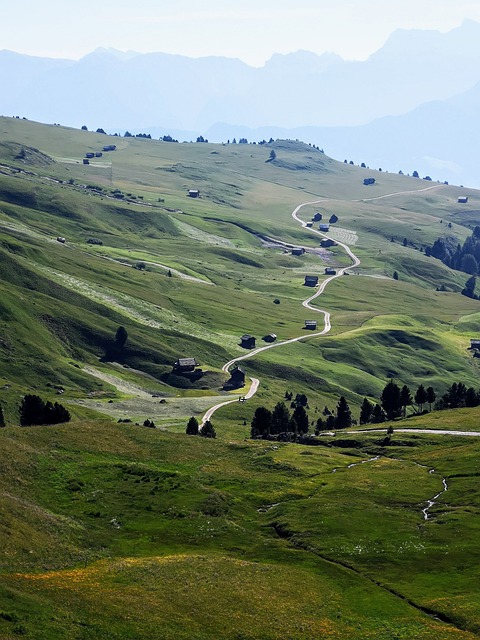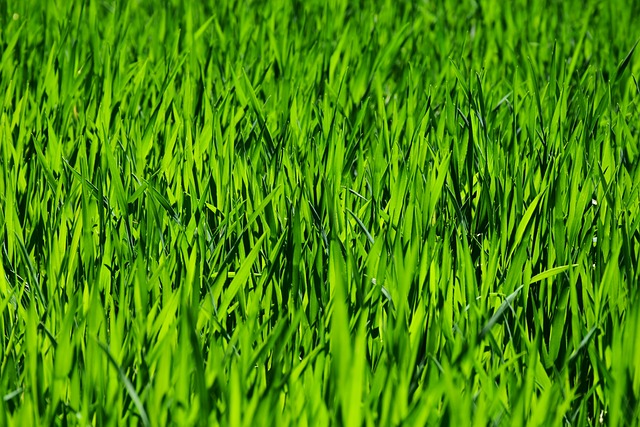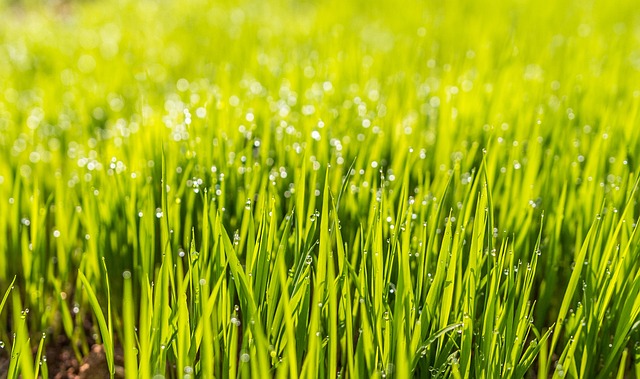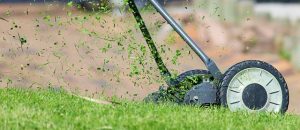Seasonal Yard Maintenance: Tips for Vibrant Landscapes with Lawn Care and Landscaping Best Practices
Seasonal lawn care and landscaping are essential practices for maintaining a healthy outdoor space …….

Seasonal lawn care and landscaping are essential practices for maintaining a healthy outdoor space throughout the year. In spring, focus on clearing winter debris, aerating soil, and fertilizing to encourage root growth and nutrient uptake. Summer requires consistent mowing at the right height for your grass type to promote healthy growth and prevent weeds. Fall involves fertilization and leaf removal to protect the lawn from harm and prepare it for winter. Winter care includes protecting plants with mulch, maintaining gutters, and ensuring landscaping elements are safeguarded against harsh weather. Each season brings unique challenges that require specific care for different elements of your landscape, which contributes to a resilient ecosystem and a visually appealing yard, ready for the next season. Tailoring your lawn care and landscaping to the seasons ensures a thriving outdoor space year-round with professional services providing expert guidance to navigate these changes effectively.
Title: “Seasonal Yard Cleanups: Enhancing Your Lawn’s Vitality with Expert Landscaping Maintenance”
As seasons transition, your yard’s needs evolve. Our comprehensive guide delves into the art of seasonal lawn care and landscaping maintenance, ensuring your outdoor space flourishes year-round. From optimizing your lawn’s health through meticulous Spring cleanups to preparing your landscape for the frosty embrace of Winter, discover the essential steps that guarantee a thriving garden. Lawn Care and Landscaping practices are key to maintaining a verdant environment, and our insights will guide you through each season’s unique demands.
- Optimizing Your Yard's Health with Seasonal Lawn Care and Landscaping Maintenance
- Understanding the Essential Steps of Spring Cleanup for a Thriving Lawn
- Preparing Your Landscape for Winter: A Guide to Protective Seasonal Landscaping Practices
Optimizing Your Yard's Health with Seasonal Lawn Care and Landscaping Maintenance

Engaging in seasonal lawn care and landscaping maintenance is a pivotal practice for maintaining a healthy, vibrant yard. Throughout the year, different environmental factors affect grass types and plant life, necessitating tailored care to optimize your landscape’s health. For instance, during spring, it’s crucial to remove any debris from winter and prepare the soil for new growth. Aerating the lawn helps with root development and nutrient uptake, allowing water and air to penetrate the soil more effectively. As temperatures rise in summer, consistent mowing at the recommended height for your grass type aids in photosynthesis and growth, while also preventing weeds from gaining a foothold. Fall is a time for lawn fertilization to fortify the turf against the cold months ahead, and for clearing away fallen leaves that could smother the grass. Lastly, in autumn and winter, it’s important to protect your landscaping from harsh weather conditions. This may involve mulching or creating barriers to shield plants from frost and snow. By adhering to a seasonal lawn care and landscaping maintenance schedule, you can ensure your yard remains resilient and aesthetically pleasing throughout the year. Landscaping elements such as trees, shrubs, and flowers each have specific needs based on their life cycles and the changing seasons, making it essential to stay vigilant and responsive to the demands of your outdoor space. Regular maintenance not only enhances the appearance of your property but also promotes a healthy ecosystem that can withstand seasonal challenges.
Understanding the Essential Steps of Spring Cleanup for a Thriving Lawn

When the snow melts and winter’s chill gives way to warmer temperatures, your lawn awakens from its dormant state, eager for the growth and vitality of spring. To ensure your yard thrives throughout the season, a thorough spring cleanup is a cornerstone of effective lawn care and landscaping practices. This process involves several essential steps that not only revitalize your grass but also prepare your landscape for the year ahead.
Begin by removing debris left from winter, such as fallen branches, twigs, and leaves. These can smother your lawn and impede growth if not cleared promptly. Raking is a fundamental task that allows light, air, and water to reach the grass, fostering healthy root development. After clearing the surface, attend to any thatch layer that may have built up over the winter months. Thatch removal or dethatching can be beneficial as it encourages air circulation and reduces disease risks. Next, aeration is crucial; it helps with soil compaction and allows nutrients, water, and oxygen to penetrate the soil more effectively, supporting robust lawn growth. Finally, apply a high-quality fertilizer tailored for spring conditions to provide your lawn with the necessary nutrients for a strong start. These steps, when executed as part of your lawn care and landscaping regimen, will set the foundation for a lush, green lawn that can withstand the challenges of the growing season.
Preparing Your Landscape for Winter: A Guide to Protective Seasonal Landscaping Practices

As winter approaches, safeguarding your landscape from the harsh elements is a prudent step in maintaining its health and beauty for the subsequent season. To prepare your yard for the colder months, it’s imperative to implement protective measures. Begin by cleaning up fallen leaves and debris, which can create mats that prevent grass from photosynthesizing and can lead to disease and decay over winter. Mow your lawn one last time to trim the grass blades, allowing sunlight to reach the crown of the grass, promoting resilience and root growth. Rake and remove this organic matter to minimize the risk of mold and fungi that thrive in damp, shaded conditions.
Next, address your plant life, particularly those sensitive to frost. Trim back perennials to prevent damage from strong winds and snow accumulation, which can uproot or break branches. Insulate young or tender plants with mulch to protect their roots from freezing temperatures. Ensure that evergreens are properly pruned to avoid excess weight from snow, which could cause them to bend or break. Finally, inspect and clean out gutters and downspouts to ensure water can flow freely and away from your home’s foundation to prevent erosion and water damage during the winter thaw. With these lawn care practices, you can rest assured that your landscape will emerge vibrant and healthy in the spring. Employing professional lawn care and landscaping services can provide additional assurance that each aspect of your yard is prepared for the winter season.
homeowners can significantly enhance their lawns’ health and aesthetics by adhering to seasonal yard cleanup routines. This article has outlined key practices for both spring and winter landscape maintenance, emphasizing the importance of proactive lawn care and landscaping upkeep year-round. By following the essential steps detailed in “Optimizing Your Yard’s Health with Seasonal Lawn Care and Landscaping Maintenance,” “Understanding the Essential Steps of Spring Cleanup for a Thriving Lawn,” and “Preparing Your Landscape for Winter: A Guide to Protective Seasonal Landscaping Practices,” your yard will not only endure but also thrive throughout all seasons. Implement these practices to ensure your landscape remains vibrant, resilient, and well-maintained, contributing to the overall charm of your property with the help of professional lawn care and landscaping services when needed.







